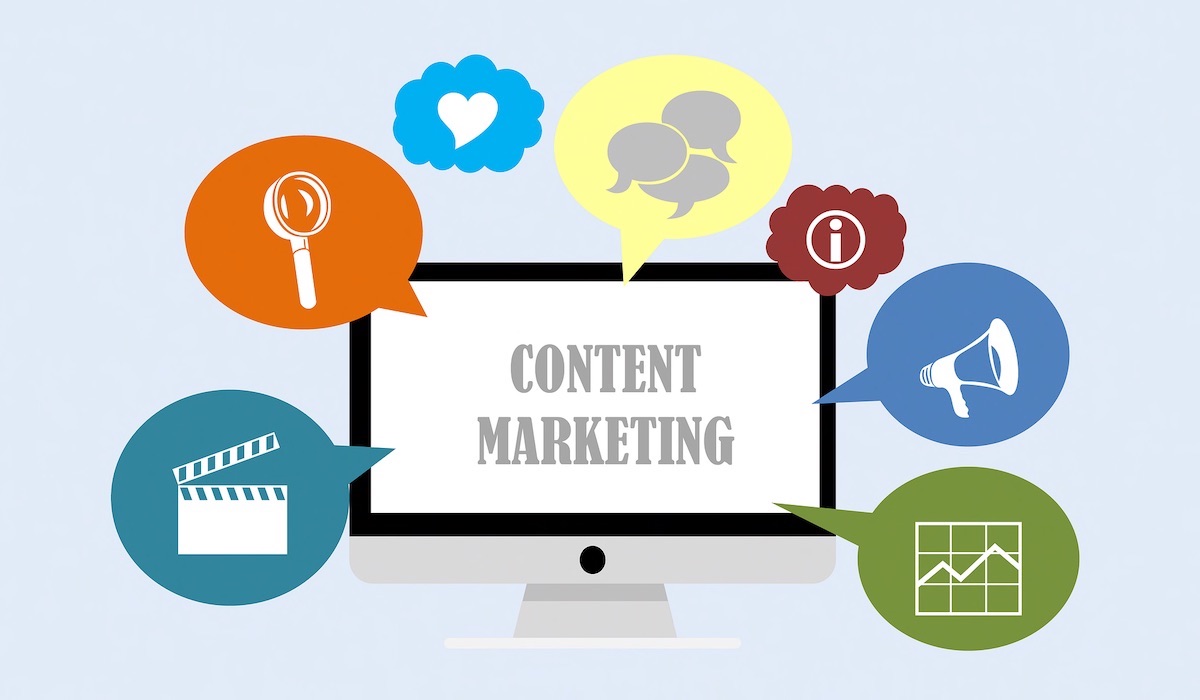Content marketing has become an increasingly important strategy for businesses of all sizes and industries. From startups to multinational corporations, content marketing is being used to engage audiences, build brand awareness, and ultimately drive sales. In this article, we will explore why content marketing is so important and how it can benefit your business.
What is content marketing?
First, let’s define what we mean by “content marketing.” Content marketing is a marketing strategy that involves creating and distributing valuable, relevant, and consistent content to attract and retain a clearly defined audience — and, ultimately, to drive profitable customer action.
The key phrase here is “valuable, relevant, and consistent.” Content marketing is not just about creating any old content and pushing it out to the masses. It’s about creating content that is specifically designed to meet the needs and interests of your target audience. Whether you’re creating blog posts, videos, social media posts, or other types of content, everything you create should be designed with your audience in mind.
Why is content marketing important?
There are several reasons why content marketing has become such an important strategy for businesses today. Here are some of the key benefits:
- Increased brand awareness
Creating and publishing high-quality content on a regular basis can help your brand get noticed by a wider audience. When people see your content shared on social media or through other channels, they’ll become more familiar with your brand and what you have to offer. Over time, this can help increase brand recognition and awareness.
- Improved search engine rankings
Search engines like Google and Bing reward websites that publish high-quality, relevant content on a regular basis. By creating valuable content that includes relevant keywords and phrases, you can help improve your website’s search engine rankings. This, in turn, can help drive more traffic to your site and increase your visibility online.
- Increased website traffic
Creating valuable, informative content can help attract more visitors to your website. When people find your content through search engines, social media, or other channels, they’ll be more likely to visit your website to learn more. This can help increase website traffic and ultimately drive more sales and conversions.
- Increased engagement
Creating content that is designed to meet the needs and interests of your target audience can help increase engagement. When people find your content helpful, informative, or entertaining, they’ll be more likely to engage with your brand in other ways. This might include subscribing to your email list, following you on social media, or even making a purchase.
- Improved customer relationships
Creating content that is designed to provide value to your audience can help improve customer relationships. When people feel like you’re providing them with something of value, they’ll be more likely to trust and respect your brand. This can help build long-term relationships and increase customer loyalty.
How to create a content marketing strategy
If you’re convinced that content marketing is the right strategy for your business, the next step is to create a content marketing strategy. Here are the key steps to follow:
- Define Your Goals
The first step in creating a content marketing strategy is to define your goals. What do you want to achieve through content marketing? Are you looking to increase website traffic, generate leads, build brand awareness, or something else? Your goals should be specific, measurable, and achievable.
For example, if your goal is to increase website traffic, you might set a target to increase website visitors by 20% over the next six months. Or, if your goal is to generate leads, you might set a target to generate 50 new leads per month through your content marketing efforts.
- Define Your Target Audience
The next step is to define your target audience. Who are you creating content for? What are their interests, needs, and pain points? The more you can understand your audience, the better you’ll be able to create content that resonates with them.
To define your target audience, start by looking at your existing customer base. What are their demographics, interests, and behaviors? You can also use tools like Google Analytics to gain insights into your website visitors.
Once you’ve defined your target audience, create buyer personas. A buyer persona is a fictional representation of your ideal customer, based on real data and educated guesses about their demographics, behaviors, motivations, and goals.
- Conduct a Content Audit
Before you start creating new content, it’s essential to conduct a content audit. A content audit is a process of evaluating your existing content to determine what’s working and what’s not.
Start by creating a spreadsheet and listing all of the content you’ve created in the past, including blog posts, social media posts, videos, and other types of content. Then, evaluate each piece of content based on the following criteria:
- Relevance: Is the content still relevant to your target audience?
- Quality: Is the content high-quality and engaging?
- Performance: How well did the content perform in terms of engagement, traffic, and conversions?
Use the insights gained from your content audit to identify gaps in your content and opportunities to improve.
- Develop Your Content Plan
Once you have a clear understanding of your goals, target audience, and existing content, it’s time to develop your content plan. Your content plan should include a list of the types of content you’ll create, the topics you’ll cover, and the channels you’ll use to distribute your content.
Here are some key elements to consider when developing your content plan:
- Types of content: Consider the different types of content you’ll create, such as blog posts, videos, social media posts, infographics, and more. Think about which types of content will be most effective in reaching your target audience.
- Topics: Develop a list of topics that are relevant to your target audience and align with your business goals. Consider conducting keyword research to identify the topics that are most likely to drive traffic to your website.
- Channels: Determine which channels you’ll use to distribute your content, such as your website, social media, email marketing, and other channels. Consider the preferences of your target audience when selecting channels.
- Content calendar: Create a content calendar to plan and organize your content. Your content calendar should include the dates you’ll publish each piece of content, as well as the channels you’ll use to distribute it.
- Create and Distribute Your Content
Now it’s time to create and distribute your content. When creating content, keep your target audience in mind and distribute it all channels.
In conclusion, content marketing is a crucial strategy for businesses looking to build their brand, engage with their target audience, and drive traffic to their website. By defining clear goals, identifying your target audience, conducting a content audit, and developing a content plan, you can create high-quality content that resonates with your audience and helps you achieve your business objectives. With a well-executed content marketing strategy, you can establish your brand as a thought leader, build trust with your audience, and ultimately drive conversions and sales. So, if you haven’t already, it’s time to start developing your content marketing strategy and reaping the benefits of this powerful marketing approach.












